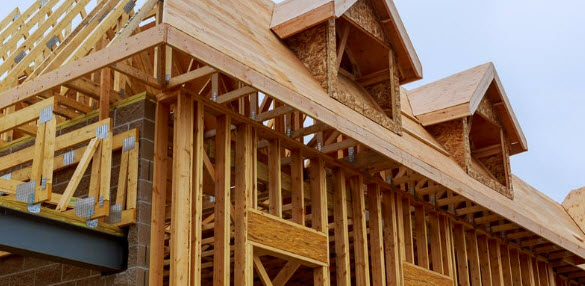Refinancing your home loan can be one of the smartest financial decisions you make. By taking advantage of home loan refinancing, you can reduce your interest rate, lower your monthly payments, or even shorten the term of your loan. Whether you’re looking to save money, access equity, or restructure your mortgage, refinancing can unlock significant benefits. In this guide, we’ll dive into how home loan refinance rates work, the steps involved in a home loan application, and expert tips to help you maximize your savings.
What is Home Loan Refinancing?
Home loan refinancing is the process of replacing your existing mortgage with a new one. The new loan may come with different terms, such as a lower interest rate, a shorter or longer loan term, or the ability to convert from an adjustable-rate mortgage (ARM) to a fixed-rate mortgage.
There are several reasons homeowners choose to refinance:
- Lower Interest Rates: If market rates have dropped since you took out your original mortgage, refinancing can help you lock in a lower rate, saving you money over the life of the loan.
- Lower Monthly Payments: By extending the term of your mortgage, you can reduce your monthly payment, easing your financial burden.
- Access to Home Equity: With a cash-out refinance, you can tap into the equity you’ve built in your home to pay for major expenses like home improvements, medical bills, or debt consolidation.
- Switch Loan Type: If you currently have an ARM, refinancing to a fixed-rate mortgage can provide long-term stability by locking in a consistent interest rate.
How Home Loan Refinance Rates Work
Home loan refinance rates fluctuate based on market conditions, including inflation, the Federal Reserve’s policies, and overall economic performance. When you refinance, you’re essentially taking out a new mortgage, so the interest rate on the new loan will depend on current market conditions, as well as your financial profile.
Here are some factors that influence home loan refinance rates:
- Credit Score: A higher credit score will typically qualify you for better rates. Lenders view borrowers with higher scores as less risky.
- Loan-to-Value Ratio (LTV): This ratio compares your mortgage balance to your home’s value. A lower LTV ratio (meaning you have more equity) will often lead to better refinance rates.
- Loan Term: Shorter loan terms, like a 15-year mortgage, often come with lower interest rates compared to 30-year mortgages.
- Loan Type: The type of mortgage you choose, whether fixed-rate or adjustable-rate, will also affect your refinance rate.
How to Refinance Your Home Loan
1. Assess Your Financial Situation
Before refinancing, evaluate your current mortgage terms, financial goals, and the potential savings you could achieve. Check your credit score, calculate your home’s equity, and determine whether refinancing makes sense for your situation.
2. Research Refinance Rates
Compare home loan refinance rates from multiple lenders. Even a slight difference in rates can save you thousands of dollars over the life of the loan. Use online tools or speak with mortgage brokers to find competitive rates based on your financial profile.
3. Apply for a Home Loan Refinance
Once you’ve found a lender offering favorable terms, it’s time to submit your home loan application. Be prepared to provide documentation such as:
- Recent pay stubs and tax returns
- Bank statements
- Credit report
- Information about your current mortgage
Lenders will use this information to assess your eligibility and offer a customized refinance rate.
4. Lock in Your Rate
If market rates are favorable, you may want to lock in your interest rate during the refinance process. Rate locks typically last 30 to 60 days, protecting you from potential rate increases before closing.
5. Close the Loan
After approval, you’ll go through the closing process, which involves signing new loan documents and paying closing costs. These costs typically range from 2% to 5% of the loan amount but can be rolled into the new mortgage in some cases.
Unlock the potential of {Keyword from blog post} with your Home Wealth Blueprint, powered by HomeLoanAdvisor’s cutting-edge property insights. Receive personalized mortgage solutions and recommendations tailored to your financial goals.
Pros and Cons of Home Loan Refinancing
- Lower interest rates
- Reduced monthly payments
- Tap into home equity with a cash-out refinance
- Switch from adjustable-rate to fixed-rate mortgage
- Closing costs can be high
- Extending the loan term increases total interest
- Must reapply for a new loan
- Potentially higher rates if credit score is low
Tips for Successful Home Loan Refinancing
1. Improve Your Credit Score
If your credit score has improved since you first took out your mortgage, refinancing can offer better terms. If it hasn’t, take steps to improve your score before applying. Pay down existing debt, avoid new credit inquiries, and correct any errors on your credit report.
2. Shop Around for the Best Rates
Don’t settle for the first offer you receive. Compare home loan refinance rates from multiple lenders to ensure you’re getting the most competitive rate. Use online rate comparison tools, contact banks, or work with mortgage brokers.
3. Calculate Your Break-Even Point
The break-even point is when your savings from refinancing exceed the closing costs. If you plan to stay in your home for at least this long, refinancing is likely worth it. To calculate, divide your closing costs by the monthly savings from refinancing.
4. Consider Loan Terms
Shortening the term of your loan (e.g., from 30 years to 15 years) can save you significant interest, though it may increase your monthly payments. On the other hand, lengthening the loan term can lower monthly payments but increase overall interest costs.
Unlock the potential of home loan refinancing with your Home Wealth Blueprint, powered by HomeLoanAdvisor’s cutting-edge property insights. Receive personalized mortgage solutions and recommendations tailored to your financial goals.
FAQs
- What is home loan refinancing?
Home loan refinancing is the process of replacing your existing mortgage with a new one, often to secure a lower interest rate or change loan terms. - How can I find the best home loan refinance rates?
Compare refinance rates from multiple lenders. The best rates are typically offered to borrowers with good credit scores and low loan-to-value ratios. - How long does the refinance process take?
The refinancing process usually takes 30 to 45 days, depending on the lender and your financial situation. - What are the closing costs for refinancing?
Closing costs typically range from 2% to 5% of the loan amount. Be sure to factor these into your decision when calculating potential savings. - Can I refinance with bad credit?
Yes, but it may be more challenging to secure favorable rates. Improving your credit score before refinancing can help you qualify for better terms. - What is a cash-out refinance?
A cash-out refinance allows you to tap into your home’s equity by taking out a loan for more than your current mortgage balance and receiving the difference in cash. - Should I refinance to shorten my loan term?
Refinancing to a shorter term can save you money on interest, but your monthly payments will likely increase. It’s a good option if you can afford the higher payments and want to pay off your loan faster. - Can I switch from an ARM to a fixed-rate mortgage?
Yes, refinancing allows you to switch from an adjustable-rate mortgage to a fixed-rate mortgage, offering more stability with consistent payments. - What documents do I need for a home loan refinance application?
You’ll need to provide pay stubs, tax returns, bank statements, and information about your current mortgage. - Is refinancing worth it if rates have dropped slightly?
Even a small reduction in interest rates can save you money over time, but you’ll need to calculate the break-even point to ensure it’s worth the cost.
Conclusion
Home loan refinancing can be a powerful tool for reducing your mortgage costs, accessing equity, or restructuring your loan for better terms. By shopping for the best home loan refinance rates, improving your credit score, and understanding the refinancing process, you can unlock significant savings. Be sure to calculate your potential savings and consider how long you plan to stay in your home before making a decision.



